You already know how important is and has been the University of Alcala for our city, but… Do you know something about Alcala before the University was built? These are the places you need to visit: Complutum Alcala la Vieja and others.
Alcala is a city with a rich history documented for over 2,000 long years. This is a very long time, although most people only visit the historical area in the city center: the Renaissance Alcala and its University.
Our aim is that you can enjoy the diverse heritage of Alcala, so that we are putting together a nice list of places where you can see some of the historic sites of the city, but not just those related to Cervantes, the Reyes Catolicos or the University of Alcala. We are digging deep to uncover some of the “hidden” history of this great city.
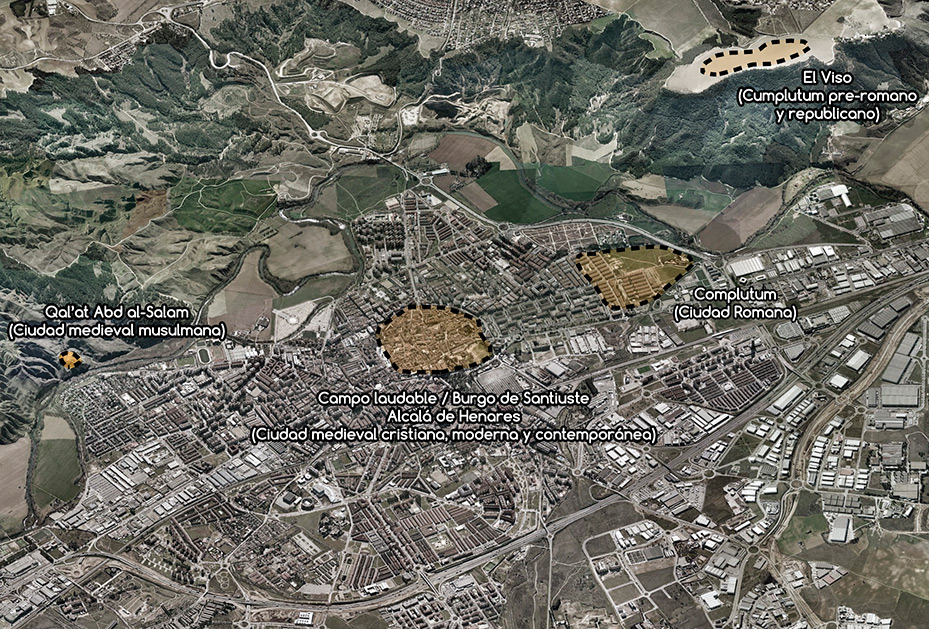
As we told you before in our brief History of Alcala, Alcala has been in different locations in the past, on both sides of the Henares river. The remains from each period are in each one of those places.
Pre-Roman Alcala de Henares
The origins of Alcalá can be directly traced to the Romans but that doesn’t mean that there weren’t other people around before, so where can we find information about these people? Well, there isn’t much left of Pre-Roman Alcalá, but you can visit the hill known as “El Viso”.
“El Viso” Hill in Alcala de Henares
Here is where it is thought that the Carpetanos had their city before the arrival of the Romans. Some say that this city was known as Kombouto based on the evidence of a small treasury of coins found here many years ago. The coins typically say Ikesankom Kombouto.
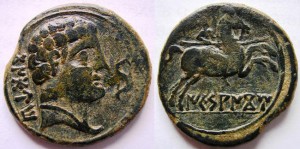
According to numismatists, Ikesankom is the name of the Carpetano tribe, and Kombouto is the name of the city; but honestly, the coins can only provide circumstantial evidence about the Carpetanos located in the area and we cannot find any substantial evidence to verify this theory. We can only imagine the truth.
Another legend says that the Romans founded a settlement on “El Viso” known as Iplacea and that eventually this settlement was moved down to the valley to be closer to resources and the name was changed to Complutum. This is exactly what archeologist say happened.
Unfortunately, there aren’t any sites for the public to visit on “El Viso”, and you just have to imagine what it might have been like over 2,000 years ago living on this hill.
Visiting Complutum Alcala during Roman times
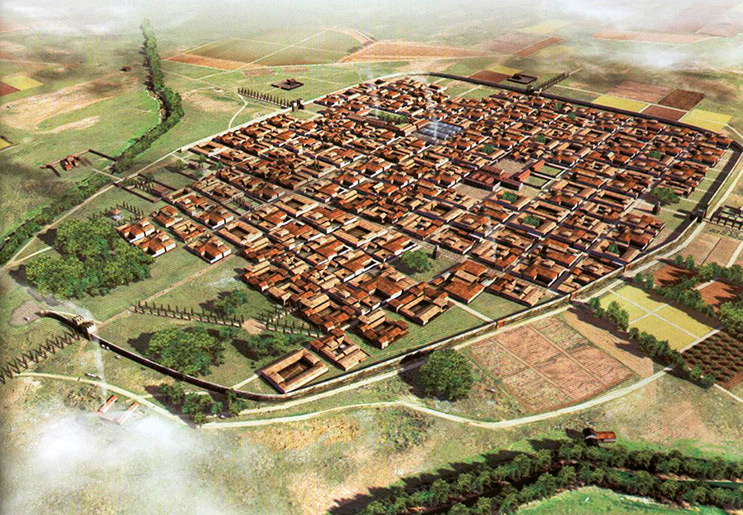
Contrary to the case of Kombuoto or Iplacea, there are numerous remnants of the Roman town of Complutum. Unfortunately, a large portion of the archeological site was destroyed in the 1960’s after excavation in order to build housing projects in the neighborhood of Reyes Católicos.
There have been a few rescued sites though, and the main one includes the center of the old city – the forum, some spectacular private houses, and a portion of the streets and old sewer system, etc.
Roman Forum in Complutum, Alcala de Henares
It doesn’t look that impressive from the street, but it is worth the small entrance fee (1 or 2 Euros). The main site of Complutum is located at Camino de Juncal s/n, in the extreme southwest of the modern city.
There, you can see some of the artifacts and also enjoy a nice walk around the ruins of the ancient roman city of Complutum. Sometimes there are dramatized visits to the Forum, which are quite interesting and fun.

The House of Hippolytus in Alcala de Henares
A hop, skip, and a jump away from Complutum is the House of Hippolytus. This monument is located at Avenida de Madrid s/n very close to the Ciudad Deportiva Municipal El Juncal at Avenida de Madrid ,9. It costs one euro to enter.
This was a “school” for the youth of the city of Complutum. Most of what can be seen now are buildings related to free and leisure time. There were large gardens, swimming pools, a library, etc. but most of these have to be imagined, and are delineated by rocks, etc.
The most impressive feature of the House of Hippolytus is the mosaics – in particular the Mosaico de los Peces (Mosaic of Fish). This one has remained almost completely intact, and is signed by Hippolytus- a well-known mosaic artisan of those times.
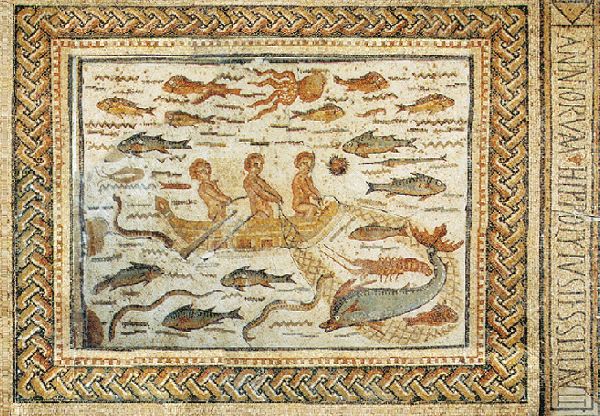
Other roman ruins in Alcal, Villa de El Val
Other roman ruins have been found in Alcalá, but most of them are not open to the public.
Of particular importance is the Villa de El Val, which is located in the neighborhood of El Val. This was a rural “farm”, which focused on horse-breeding for horse racings. The site has been remodeled in the last years to allow visitors, but it is still far from being completed.
Alcala la Vieja, Alcala de Henares during Muslim times
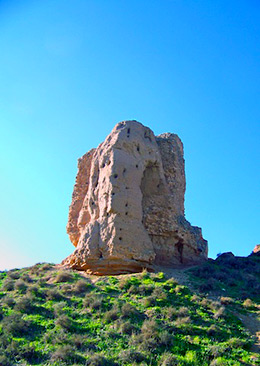
The muslims came to Spain in 711, and it took them less than a decade to conquer practically all Spain.
Alcala was of course no exception, and although the old-roman city was hardly populated, a fortress was built in the other side of the river on a hill as a defense against Christian raids.
The ruins of this fortress is called “Alcala la Vieja” and it can still be visited, perched atop a hill over the Río Henares. Not much is left of it, but you can see an amazing view of the modern city and also see some of the floor plan of the old fortress.
Unfortunately it is difficult to reach, and first you must go to the nature reserve on the other side of the river. The two main difficulties seem to be getting across the river – especially on foot – and then hiking to the fortress.
It is fairly close to the neighborhood of the Virgen del Val, but there is no way to cross the river at this point, and you must hike from the nature reserve parking lot which takes at least an hour, depending on which path you decide to take. You can use this opportunity to kill two birds with one stone and see the Cerros de Alcalá and also visit the fortress of Alcalá la Vieja.
If you are interested on this visit, better read this post in order to learn which path you should follow.
Museums worth visiting in Alcala de Henares
After changing hands between muslims and Christians several times, Alcalá was finally reconquestered in 1118, and it was after this date that the Alcala that we know today started to take form. This date, 1118, is the beginning of the medieval period of Alcalá.
Crucial in this process was that the pacification of the region lead to a growth and concentration of the population around the sanctuary containing the remains of the “Santos Niños”; Saint Justo and Pastor, who were martyred in Complutum during roman times. (If you have no idea of who this children are, you should read this post). This sanctuary would be successively increased during the years, and would finally be the cathedral of the town.
In this new Renaissance Alcala, there are nowadays a couple of museums that will help you understand how the city was in the past.
Centro de Interpretación del Burgo de Santiuste in Alcala de Henares
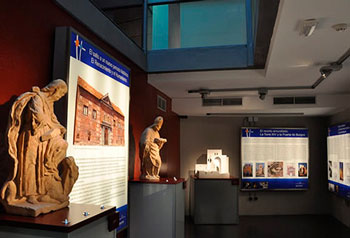
If you would like to find out more about this time in the city, you should visit a nice little museum that is called Centro de Interpretación Burgo de Santiuste.
It is located at Calle Cardenal Sandoval y Rojas, 3.
Regional Archaeological Museum in Alcala de Henares
To finish off our little tour of Alcala de Henares pre-University, let me recommend a visit to the lovely Regional Archaeological Museum located in the Plaza de las Bernardas s/n. Entrance is free.
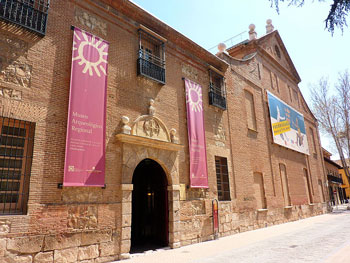
You will find archaeological remains not only from Alcala, but from the whole of Madrid. This will help you understand better the surroundings of our city.
More information in its website.
What are the best places to visit in Alcala de Henares? These are our favourites!

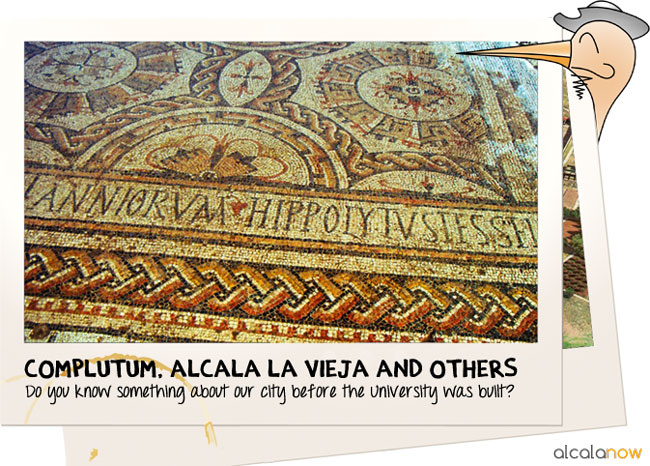


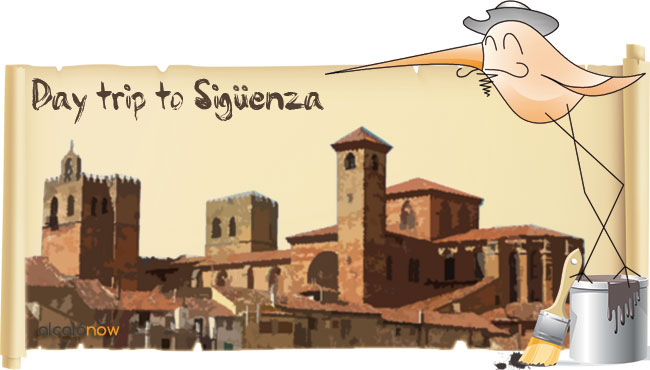
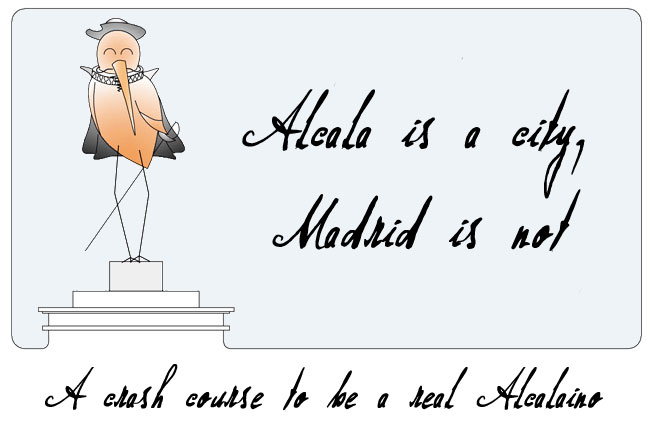
Hello,
We are planning on visiting COMPLUTUM on 7 April, 2017. Can you tell us the OPENING days & TIMES AND TICKET PRICES?
Thank you in advance for your help.
Regards, Angela Cella
OPENING days & Times:
-Tuesday to Sunday, 10:00 – 14:00 and 17:00 – 20:00 (May to September)
-Tuesday to Sunday, 10:00 – 14:00 and 16:00 – 18:00 (October to April)
-CLOSE days: 24, 25 and 31 of December. 1 and 7 of January.
TICKET PRICES:
1 euro